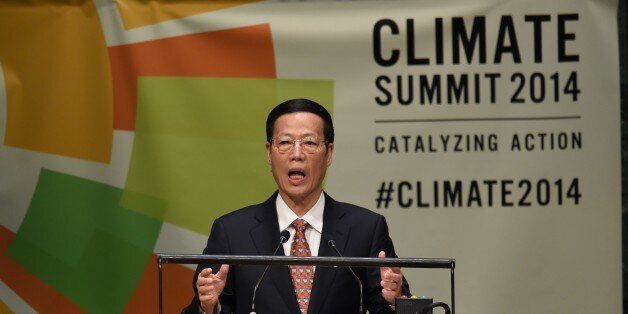
China's dynamic growth has been accompanied by severe pollution problems and large emission of CO2. China will be the main victim of climate change, caused partly by its own CO2 emissions, should no action be taken. It is therefore in China's self-interest to take action to reduce CO2 in the very near term. Fundamental changes in economic growth patterns and a transformation of economic structure are called for.
China's economic structure has historical and institutional roots. Before the transition to a market oriented economy in 1979, to fasten economic "catching up," a planned economic system was established, in which production factors such as labor, land, energy and almost all natural resources were under-priced so as to subsidize the development of heavy industries. To ensure effective implementation of this strategy, a state control system was developed which was the institutional foundation of this distorted, planned economy. In addition to that, in a long period of economic isolation, a set of industrial technologies were domestically brewed which maximizes use of the relatively abundant resources, such as labor and coal. Today's generation, therefore, inherited an industrial technology set featuring small scale, high resource and energy use, high pollution, high carbon and low productivity. Structural transformation implies altering the technology set, and venturing on a new path with low energy and resource consumption, low carbon and high productivity.
The challenge facing structural transformation is inherent. Structural changes bring about labor dislocation and reduce GDP in local economies at least in the short run. In addition, energy resources become increasingly under the control of large state-own firms, increasing the barrier for the entry and growth of green industries.
China 2030, a joint research publication of the World Bank and China's Development Research Center of the State Council, points out: "While the transition toward green development will not be easy, it will open the door to new opportunities." Pricing reform is a least cost option for the transformation. The undervaluation of natural resources mainly came from missing market for environmental externalities associated with industrial production. Getting the price right is a way of correcting this market failure. In the past, efforts have been on implementing command and control measures and they proved to be ineffective and unsustainable. Implementing environmental tax on domestic pollution and carbon tax on CO2 emission have the potential to raise marginal cost of energy use and causing environmental externalities, therefore changing emitters' behavior in favor of carbon and pollution reduction.
The green growth will be further boosted if entry barrier is removed. While systematic reform has yet happened, breakthroughs do exist. The household based Distributed Energy System (DES) in solar PV was approved by the State Grid, subsequently by the State Council in 2013. Under this new policy, it is anticipated that DES in solar PV will gain fast development, especially in rural areas. In addition, the reform will be a big booster to development of power generation from residual thermal resources in industrial process.
China will reap great opportunities due to the fact that a tremendous capacity in technological innovation already exists and has made a great contribution to green growth in China and in the world. With more favorable policies (such as further subsidies in R&D) and a reformed world trade scheme, green industries in China will grow even more and make greater contribution to expedite green economic transformation in China and in the world.
An additional aspect particular to developing countries is rural land reform and its contribution to green growth. In developing country two processes are important in green growth. One is rural migrant labor allocation toward green industries. Another is making rural natural resource sector a greater contributor to green economic transformation. China's forest tenure reform provides fine examples for these two aspects. Empirical analyses show that the forest tenure reform in China, which increases the share of forest land under household management, has alleviated pressure of rural migration toward cities. This will allow time for urban sector to transit to green economy. Secondly, the forest tenure reform brings about greater incentive for farmers and private sector to improve forest management, therefore increasing the supply of renewable materials and energy source, a contribution to the green development of the economy. Thirdly, China's reform provides a testing ground for institutional reform in developing world, where reducing deforestation and forest degradation (REDD+) are crucial to green growth. Through further reforming the constraining regulations, forest productivity will rise significantly and forest sector will be able to make even greater contribution to sustainable development in China, as well as in the world.
This post is part of a month-long series produced by The Huffington Post in conjunction with a variety of events being held in September recognizing the threats posed by climate change. Those events include the UN's Climate Summit 2014 (that was held Sept. 23, 2014, at UN headquarters in New York) and Climate Week NYC (Sept. 22-28, 2014, throughout New York City). To see all the posts in the series, read here.